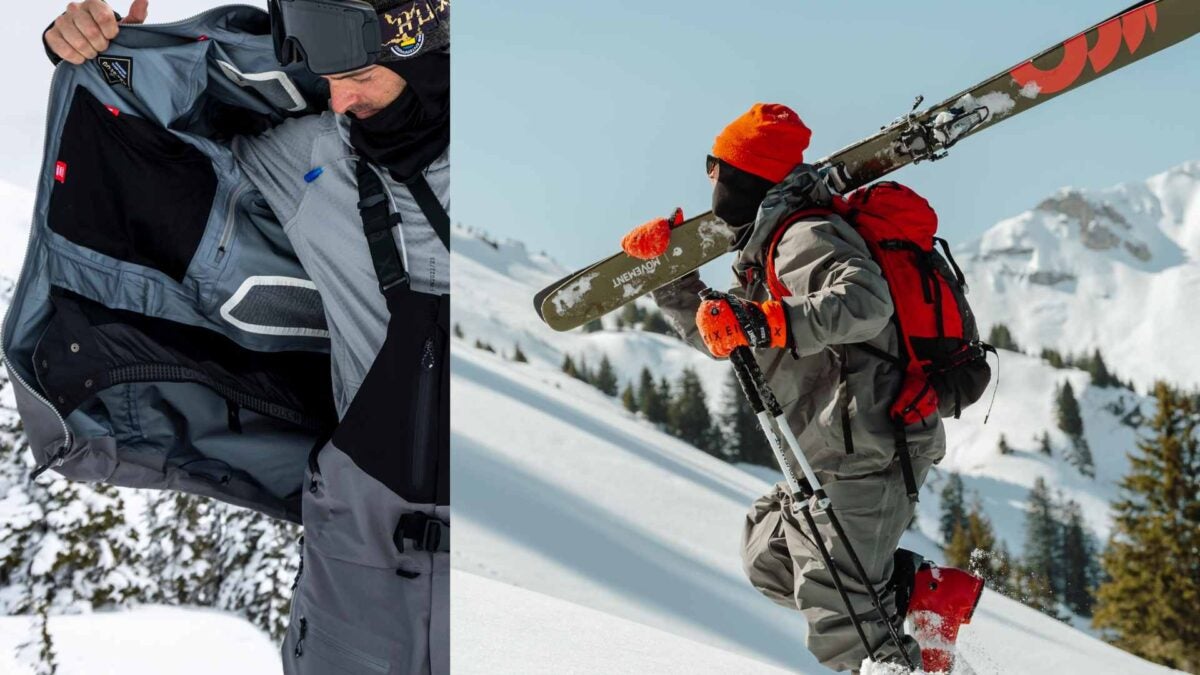Products You May Like
Get full access to Outside Learn, our online education hub featuring in-depth fitness, nutrition, and adventure courses and more than 2,000 instructional videos when you sign up for Outside+
Sign up for Outside+ today.
When outwear brand 686 began developing its new Gore-Tex Pro 3L Thermagraph Jacket and its matching bib, it was a research paper from the U.S. Army that inspired a brand new combination of fabrics, and a first for Gore-Tex, that could change the way you layer on your next ski day.
According to the research, humans lose most of our body heat from areas with high blood flow, but we feel coldest in places with lots of nerve endings—meaning, there is a difference between feeling warm and actually keeping warm. For a brand that traditionally makes insulated outwear, that makes sense.
But to accommodate a start-stop activity like skiing, 686 founder Mike West says the brand was looking for a way to simplify everything by creating a lightweight product that is both durable and breathable while still insulated.
To that end, Michi Bretz, of 686’s innovation and design team, knew moving sweat away from the body was the key to the brand’s new design.
Bretz was looking for a material that could help wick moisture when he found Alpha, the furry insulation originally developed for U.S. special forces. Then, on a separate project, he came across Gore-Tex Pro, the manufacturer’s most durable and breathable waterproof fabric.
The vision for the new kit would combine pockets of insulation just where it is most needed to keep the skier warm, an increasingly common practice known as body mapping.
The Gore-Tex Pro 3L Thermagraph Jacket and its matching bib combine Gore’s top-of-the-line Pro waterproof-breathable shell fabric with Polartec’s Alpha synthetic insulation. 686 says it is the first and only outerwear to laminate these materials together. Gore wouldn’t verify the claim but in more than 15 years of ski jacket testing (and an hour of Google searching), I’ve never seen another jacket or pants with this material combo.
Bretz combined Gore-Tex Pro with patches of Alpha in zones where the body loses the most heat, gets sweatiest, and where it is most sensitive to cold. What Bretz had designed was a one-piece layering system that managed moisture and warmth. But there was one big hurdle: Gore has to test and approve any apparel using its fabric—and insulation is anti-thesis to Pro’s focus on breathability.
According to Bretz, if you were to test a regular jacket with a mid-layer together, it wouldn’t pass Gore’s breathability standards.
After a few rounds of testing and back and forth, Gore gave the green light.
686 had to use a special tape to laminate the Alpha to the interior of the jacket and adjust the placement and shape of the insulation panels. This is most obvious in the back of the jacket, where Bretz had to break the Alpha into chunks, giving the jacket the look of ribs and a backbone. The jacket also has Alpha patches on the top of each shoulder. In the bibs, the insulation wraps across the thigh and knee and covers each butt cheek with separate panels.
More tweaks came from 686’s growing team of pro skiers. Athletes Parker White and Laurent De Martin, as well as team manager Patrick McCarthy, tested various prototypes over the last three winters at Mount Baker.
“No matter how warm and wet out it was, at the end of the day I was bone dry,” McCarthy says. There was just enough insulation, in just the right places, that most days he didn’t need a mid-layer, he says.
As a skier who is often on the edge of too warm and prefers to wear fewer layers, this is an exciting concept—and impressive enough to get Gore’s seal of approval.
Bottom line, 686’s Gore-Tex Pro 3L Thermagraph Jacket and Bib feature military-grade insulation being fused for the first and only time approved by Gore-Tex with 3L fully taped construction, a merino blend collar. HydraStash compatibility (686’s propriety built-in water bladder), and RECCO tech. We’ll be sharing an updated review after more testing on snow.
